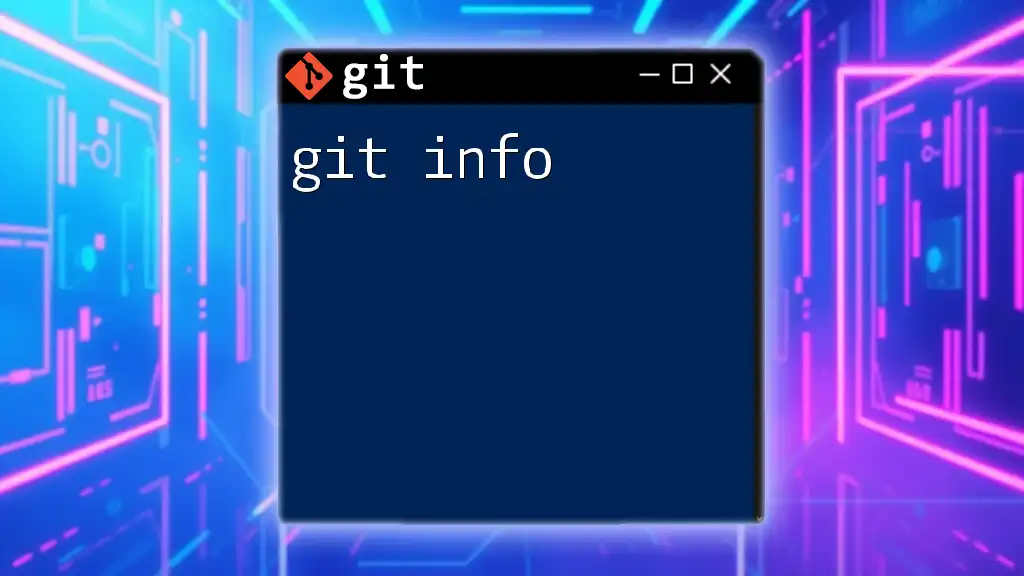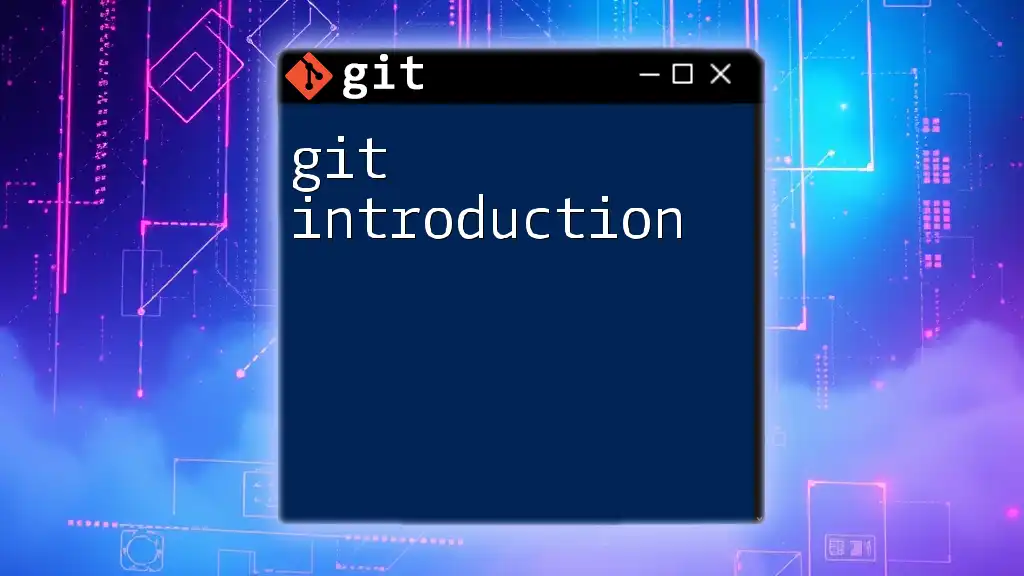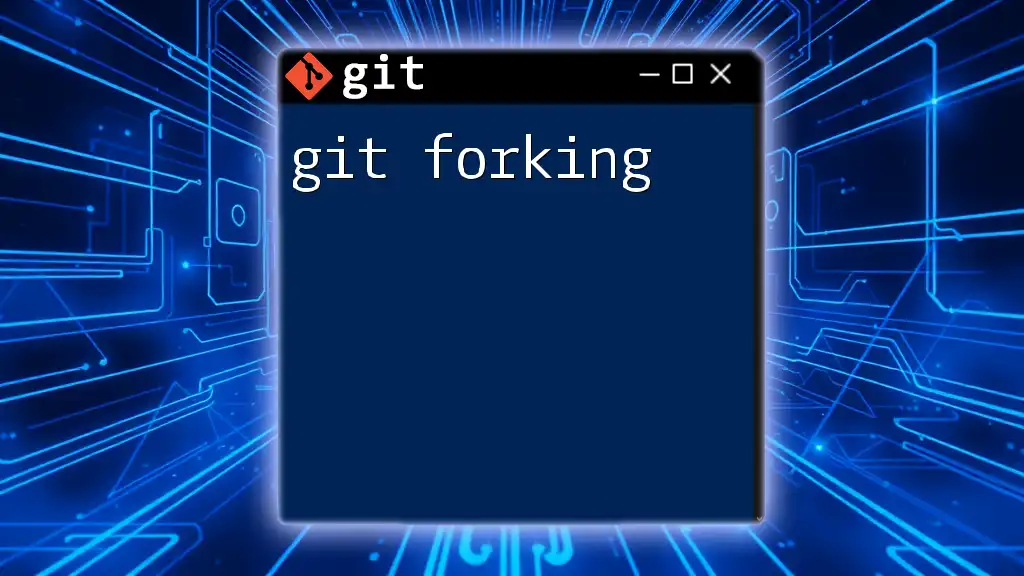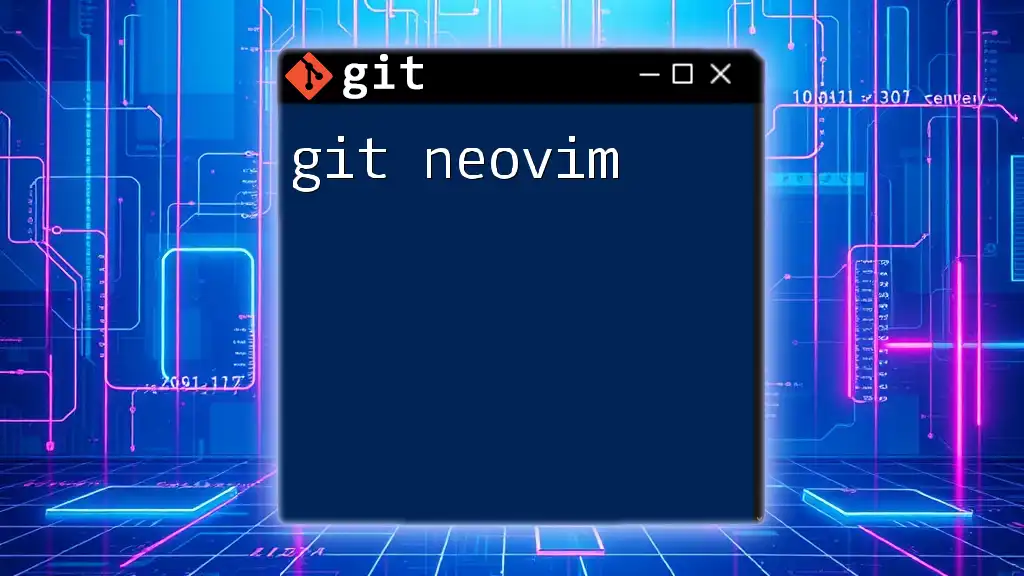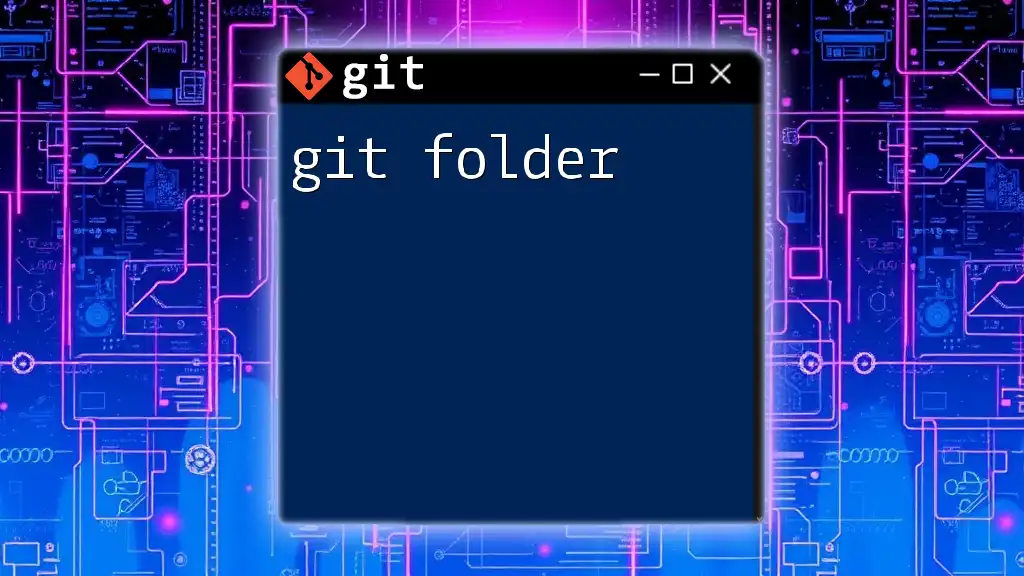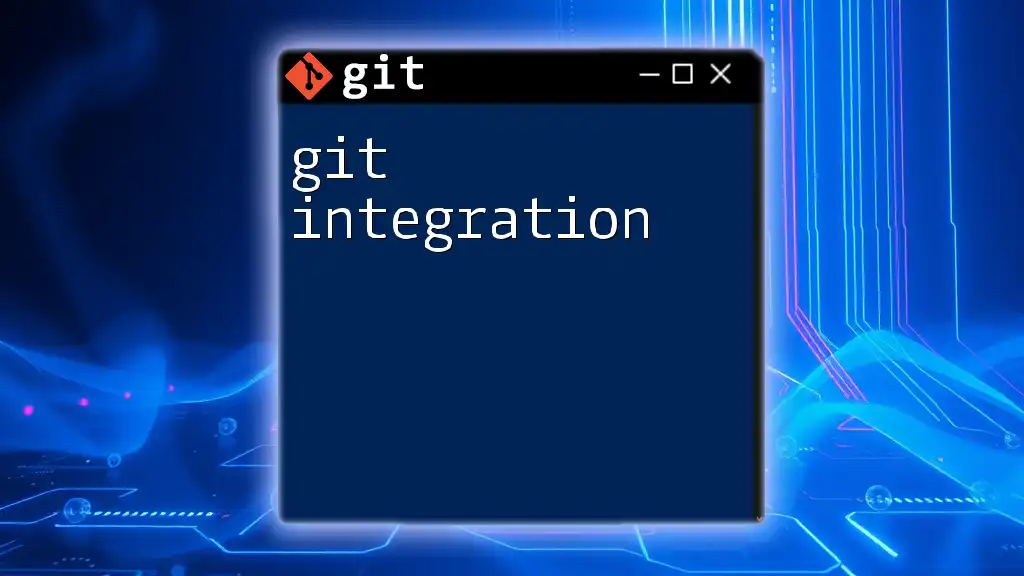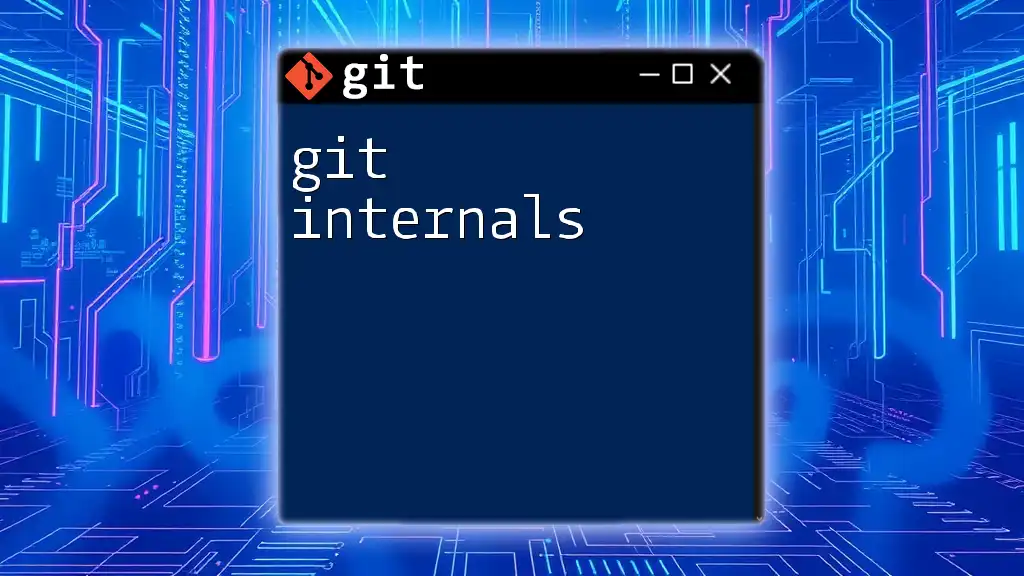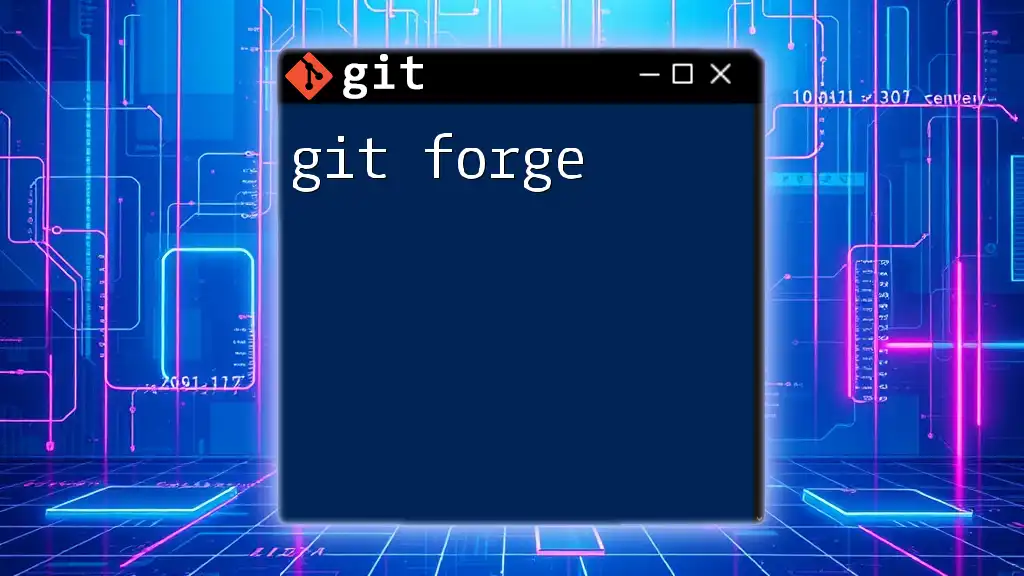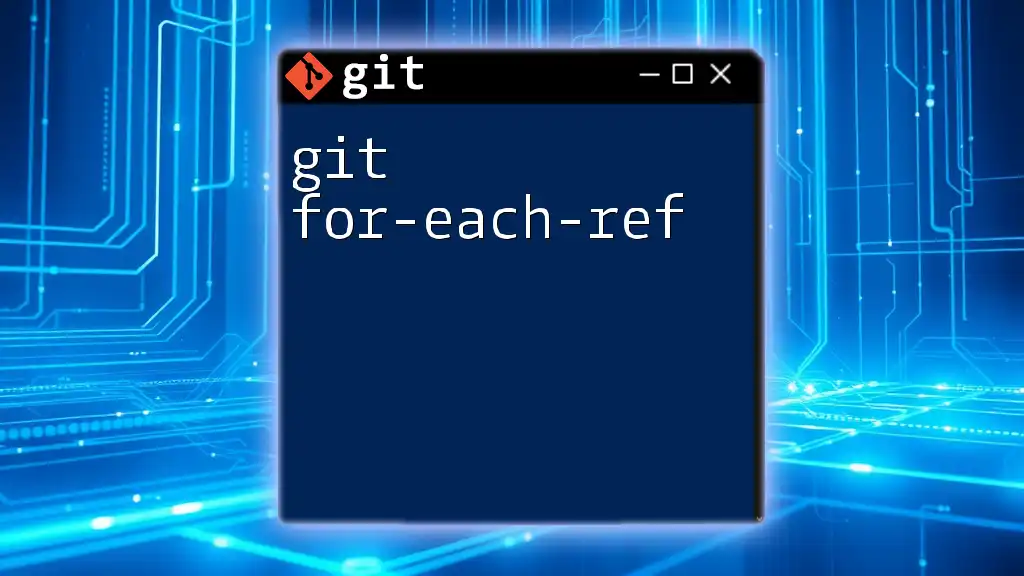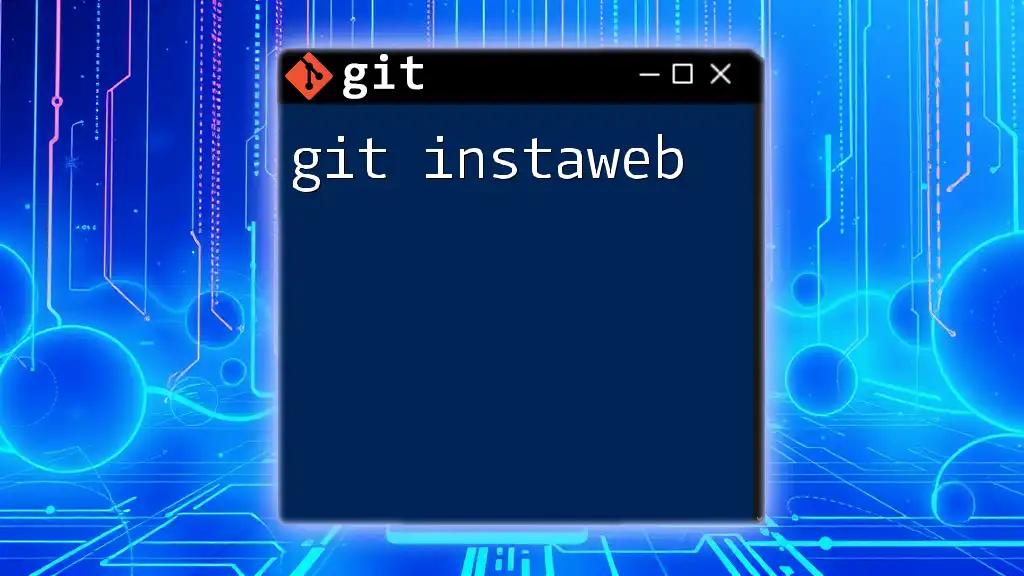The `git info` command provides detailed information about a repository, including its status, branches, and commits, helping users to understand the current state of their project.
Here's a code snippet to use for checking the status and recent commits of your Git repository:
git status
git log --oneline --graph --decorate
Understanding Git Info Commands
What are Git Info Commands? These commands provide essential information about your Git repository and its history. Knowing how to retrieve this information can significantly enhance your workflow and make collaboration smoother.
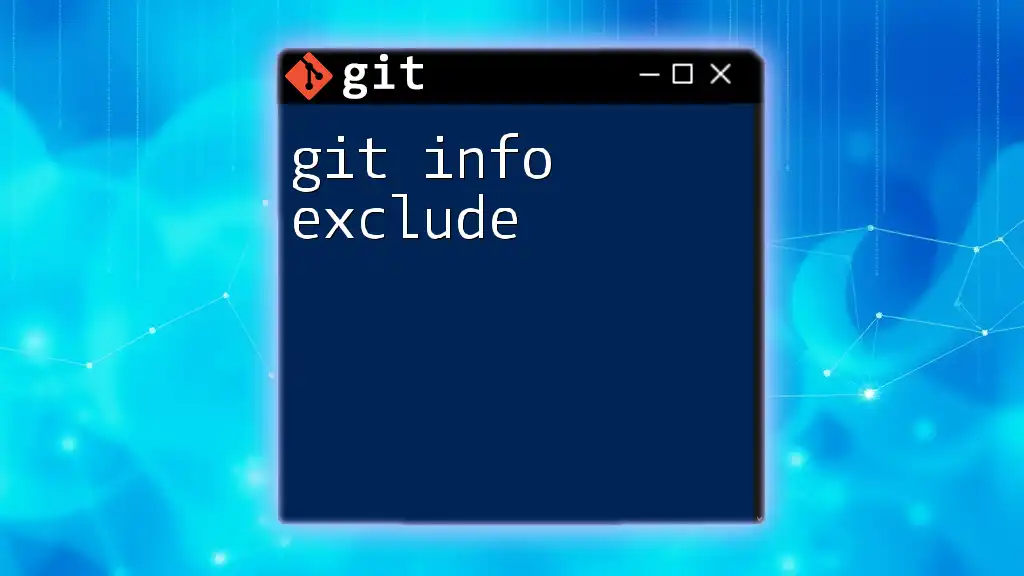
Getting Repository Information
Displaying Repository Configuration
To begin understanding your repository, you can view its configuration settings using:
git config --list
This command reveals all the configuration settings for your repository, including user information like name and email. For example, you might see output like:
user.name=Your Name
user.email=you@example.com
Understanding this information is crucial for ensuring that your commits are associated with the correct identity, especially in collaborative environments.
Viewing Repository Status
It's essential to know the current state of your working directory, especially before committing changes. The `git status` command serves this purpose:
git status
This command displays a summary of the changes that have been staged, modified, or untracked. You'll typically notice sections highlighting modified files, files ready for commit, and untracked files. This clarity helps prevent accidental commits of unintended changes.
Viewing Commit History
To explore the history of your repository and understand what changes have been made over time, use:
git log
This command lists each commit along with its unique hash, author, date, and the commit message. A sample output may look like this:
commit e12345e678abc1234567890abcdef1234567890
Author: Your Name <you@example.com>
Date: Thu Oct 20 12:34:56 2023 +0000
Initial commit
This information is crucial for auditing changes and understanding the evolution of your project.
Formatting the Log
The output from `git log` can be overwhelming. However, you can customize its presentation for clarity. For instance, the following command creates a concise and visually appealing representation:
git log --oneline --graph --decorate
Here, `--oneline` condenses commits to a single line, `--graph` visually represents branching and merging, and `--decorate` shows references to branches and tags. This formatted log is much easier to read and helps visualize your project's structure.
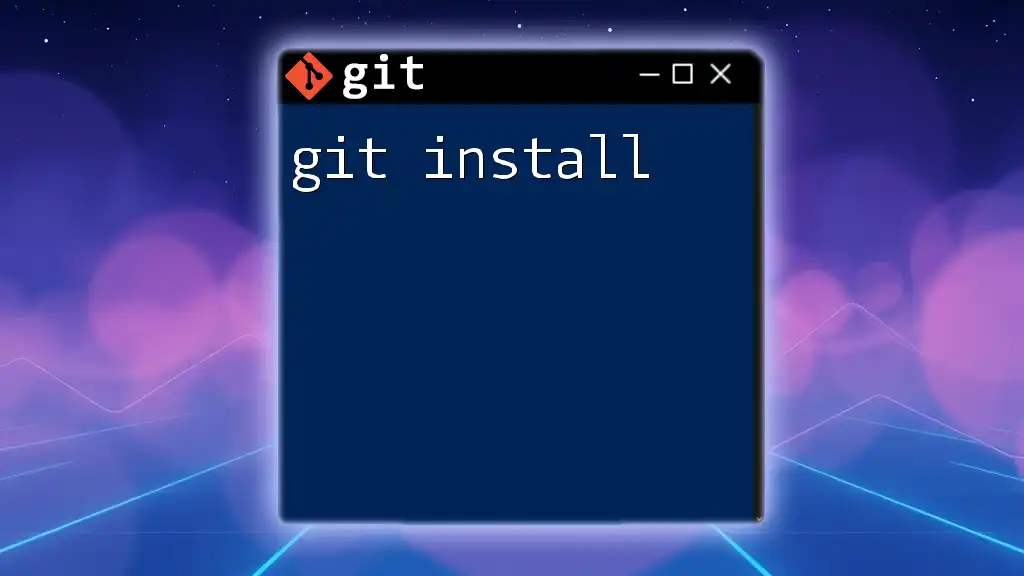
Understanding Branch Information
Listing Branches
To see all your local branches, simply execute:
git branch
This command lists the names of your branches, marking the current branch with an asterisk (*). Knowing your branch structure is vital for efficient workload management and collaboration.
Viewing Detailed Information about Branches
If you want to delve deeper into the relationships and details among branches, `git show-branch` is the command to use:
git show-branch
It provides a detailed overview of multiple branches, aiding in understanding how they relate to one another in your developmental history.
Viewing Remote Branches
To check the remote-tracking branches available, use:
git branch -r
This shows all branches in the remote repository, providing insight into collaborative work that may not yet be reflected in your local repository.
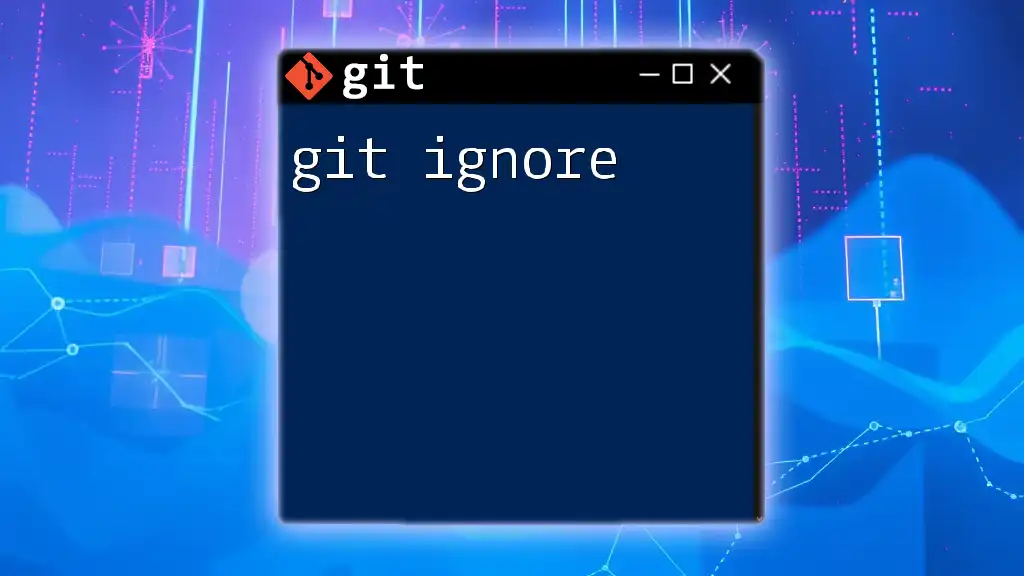
Checking Changes and Differences
Viewing Staged vs. Unstaged Changes
One of the best ways to understand modifications made in your project is through the differences between changed files. To view changes that have not been staged, run:
git diff
This command compares the working directory with the last committed state, highlighting unstaged changes.
Staged Changes
If you're interested in the changes that are ready to be committed, you can check the staged changes with:
git diff --cached
This allows a clear view of what will be included in your next commit, ensuring you only commit what you intend to.

Repository Metadata
Viewing Repository Information
A brief but informative command to check remote repositories associated with your current repo is:
git remote -v
The output lists the connected remotes along with their fetch and push URLs. This command helps confirm where your code will be pushed or pulled from during collaboration.
Configuring Remote Repositories
If you need to add a remote repository, you can do so using:
git remote add <name> <url>
Here, replace `<name>` with your desired identifier for the remote and `<url>` with the repository's link. Adding remotes correctly enables seamless collaboration and synchronization.
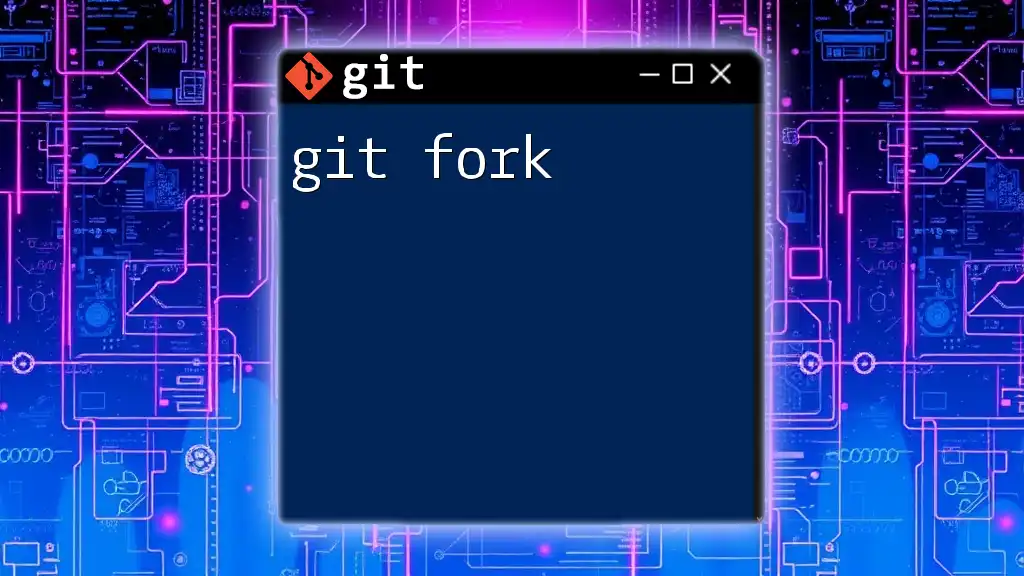
Advanced Git Info Commands
Using `git reflog`
For a complete history of actions in your Git repository, utilize:
git reflog
This command provides a log of all updates to your references, including commits, checkouts, and merges. It becomes invaluable for recovery purposes, as it allows you to recover lost commits.
Using `git show`
For a closer look at specific commits, the `git show` command is incredibly useful:
git show <commit-hash>
Replace `<commit-hash>` with any valid commit identifier. This command displays detailed information about that specific commit, including the changes made, enabling a deeper understanding of the project's development.
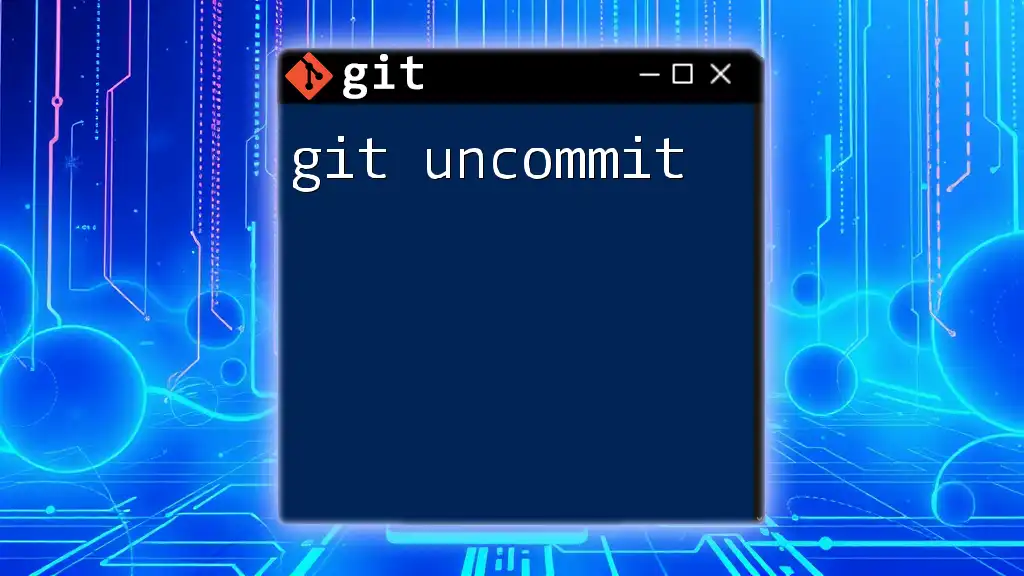
Conclusion
In summary, git info commands are crucial for understanding the state of your repository, managing branches, inspecting changes, and exploring commit history. Mastering these commands will empower you to navigate Git more confidently, making you a more effective developer in collaborative environments.
Go ahead and practice these commands in your local repository. Becoming familiar with the information they provide will not only enhance your efficiency but also enrich your collaborative efforts in projects. If you have any experiences, insights, or questions, feel free to share in the comments!
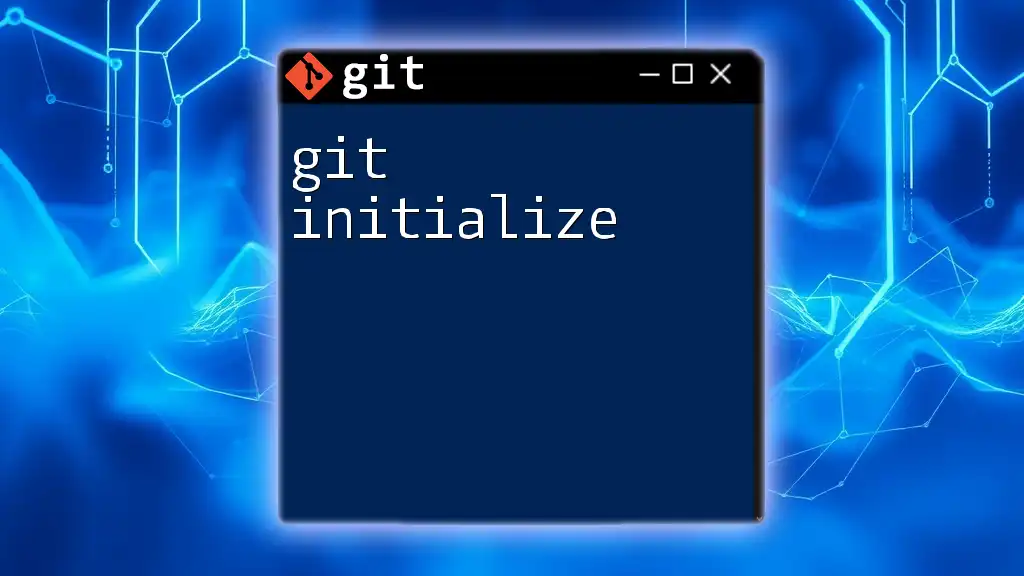
Additional Resources
For further reading, consider exploring the official Git documentation and other online tutorials. Whether you're just starting or looking to refresh your skills, there are abundant resources available to deepen your understanding of Git and its powerful features.

